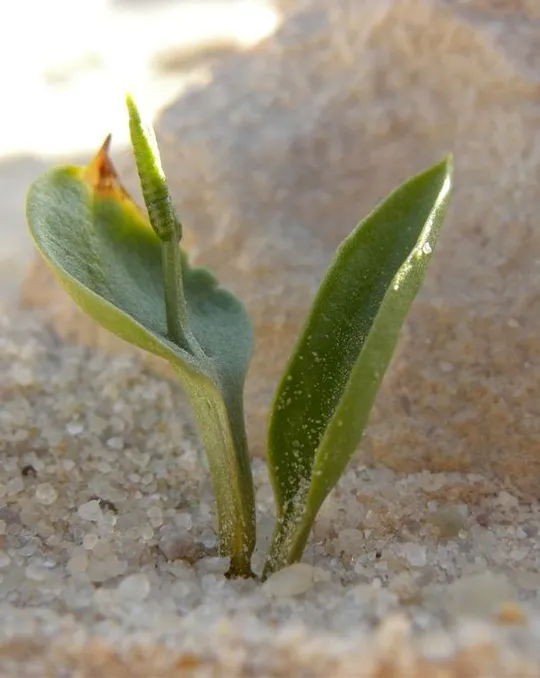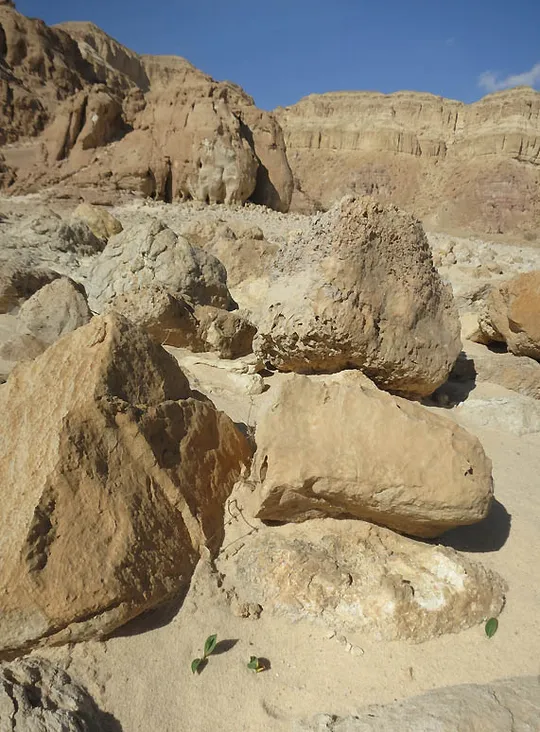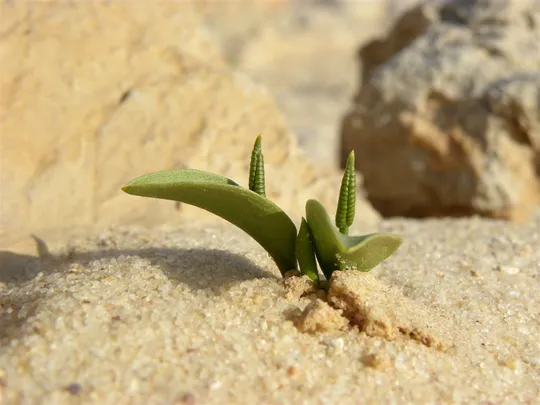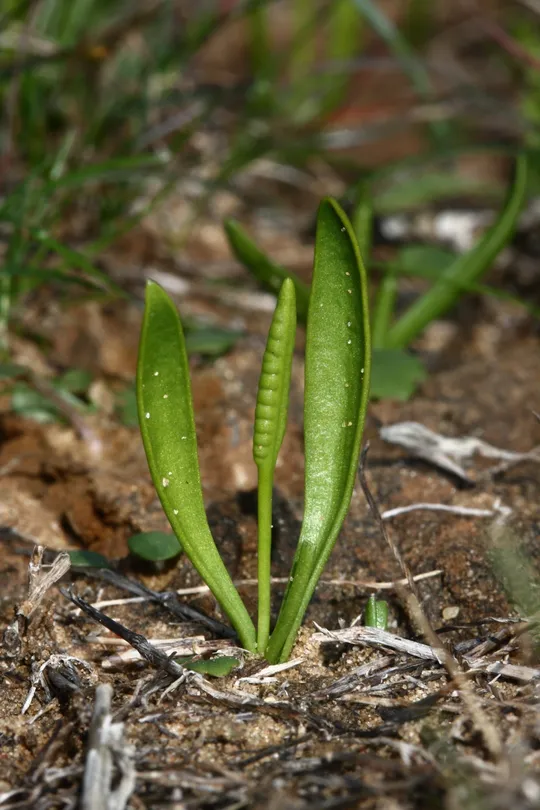Large Adderstongue, Southern Adderstongue
Ophioglossum polyphyllum



Ophioglossum
polyphyllum was first found as a new
species in Israel in 1981 in Nahal Shezaf in the northern Arava. It grows at two sites in the
Arava, in the Shezaf sands (two populations) and in the Samar sands, where it
was found in 1990 by Hadas Pereg and Claus Holzapfel.
Sandy areas in the Arava.
The
genus Ophioglossum is one of the four
genera in the Ophioglossaceae family, which belongs to the order of the same name in the class Polypodiales,
whose distribution is mainly tropical. In all the species of the genus there is
a separation between the green, vegetative part of the frond and the spore stalk
that is usually connected to its base. This is unlike most other Polypodiales
where all the fronds are similar and the spores are found on the frond, usually
at its margins or underside. The species in the genus grow throughout the
world, and in Israel, there are two species. The second species, O.
lusitanicum, is close
to O. polyphyllum (see there). Three species grow in Europe. The
number of chromosomes in the species is the highest known in the plant world,
and can reach 1260 (usually between 240-300). Some species are used in
medicine, a few as ornamental plants and one species is a tropical epiphyte.
•
Ophioglossum
polyphyllum grows on three disjunct sites in one region –
the
Arava. Its existence in
Israel is only known since 1981 and therefore there is no information on the
increase or decrease in the number of sites.
•
The
populations appear in small patches of 10 to 20 square meters, with a few
hundreds plants in each patch.
•
The
potential use of sandy areas in the Arava for desert agriculture and sand quarrying
could lead to the extinction of populations. The small patch size may lead to accidental
and random extinctions.
•
The
O. polyphyllum sites are located within the boundaries of nature
reserves: the Nahal Shezaf populations
are located in the Wadi Shezaf Nature Reserve and the Samar population is located in within the
Yotvata Reserve. It is protected by law by virtue of being a fern.
•
O.
polyphyllum has an extensive geographical distribution
and is not globally endangered.
The known populations in the Arava should be
marked and monitored. Field surveys should be conducted to locate additional
populations.
Ophioglossum polyphyllum
has a broad distribution. It grows in desert sands throughout Africa: Egypt,
Sudan, Somalia, Kenya, Uganda, Tanzania, Malawi, Mozambique, Zambia, Zimbabwe,
Namibia and South Africa. It is also found in Morocco and the Azores Islands.
In the Asian continent, it grows in the Arabian Peninsula, in India and in
Afghanistan. The global distribution pattern is disjunct and the populations in
Israel are hundreds of kilometers away from the populations of Egypt and the
Arabian Peninsula.
Ophioglossum polyphyllum is a minute
rare fern that grows in Israel on the Shezaf and Samar sands, in a fragmented
distribution pattern. It grows in concentrations at its sites that appear as
small patches. It is threatened by the conversion of sandy areas to
agricultural use or by the accidental extinction of a population due to
earthworks.
כהן, ע. ושמידע, א. 1989. צמחים נדירים בארץ/לשון אפעה מצרית. טבע וארץ ל"א/4: 15-17.
Current Occupancy Map
| 1000 squre meter pixel | 5000 squre meter pixel | 10000 squre meter pixel | |
|---|---|---|---|
| number of observations | 0 | 0 | 0 |
| in total pixels | 0 | 0 | 0 |
| Family | Ophioglossaceae |
| Classification | On the endangered species list |
| Ecosystem | Desert |
| Chorotype | Sudanian – Saharo - Arab |
| Conservation Site | Shezaf Nature Reserve |
| Rarity |
1
5
6
|
|---|---|
| Vulnerability |
0
2
4
|
| Attractiveness |
0
0
4
|
| Endemism |
0
0
4
|
| Red number |
1
4.2
10
|
| Peripherality | S |
| IUCN category | DD EW EX LC CR EN VU NT |
| Threat Definition according to the red book | Endangered |
 Based on:
Based on:






